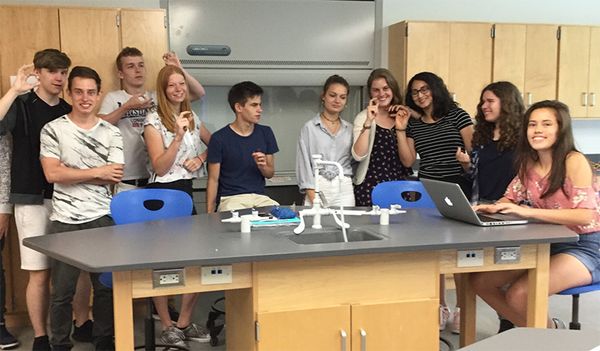STEM: «Touchable DNA»
Isolation of one’s own DNA from oral mucosal cells
Each cell contains genetic information, the DNA (deoxyribonucleic acid). The DNA contains, among other things, the genes that code for ribonucleic acids (RNA) and proteins, which are necessary for the biological development of an organism and the metabolism in the cell. Chemically, it is a nucleic acid, a long molecular chain (polymer) of individual units, called nucleotides. The 10th grade students are already familiar with the structure of DNA and are now isolating their own DNA from cells obtained from the oral mucous membrane.
What equipment do you need to isolate and display human DNA, elaborate scientific devices and special chemicals? Much easier: cooking salt, dishwashing liquid, alcohol and some simple laboratory equipment such as disposable pipettes and test tubes. Actually, you could do this in your kitchen at home.
You shouldn’t eat before the experiment for about half an hour. The oral mucosal cells are dissolved with salt water and then mixed with detergent. The detergent breaks up the cells; their cell nuclei and the DNA are now suspended in an envelope of water molecules.
And now the “Schnapps”: The mix is carefully covered with ice-cold alcohol which removes the DNA from the envelope of water molecules. The small, almost colorless balls that emerge are the individual DNA molecules of each student.
Bottled in little jewelry vials, the molecules of life can now be stored easily.

